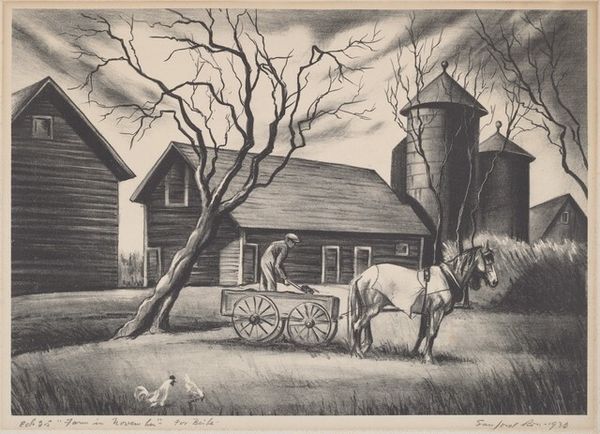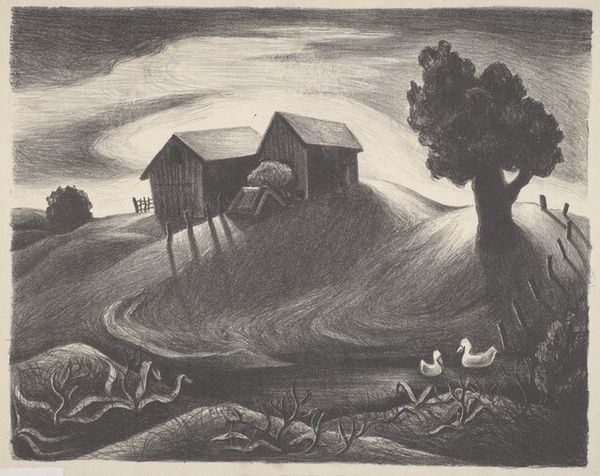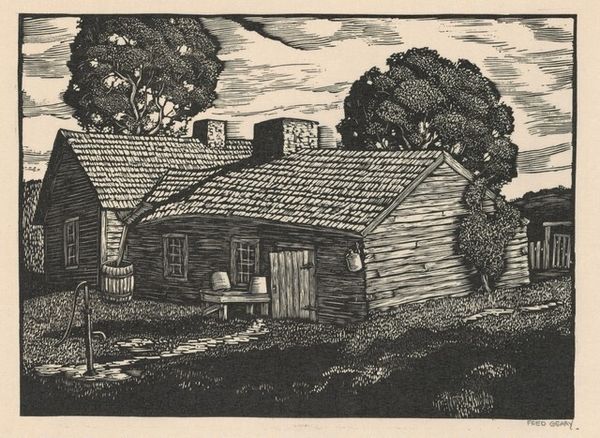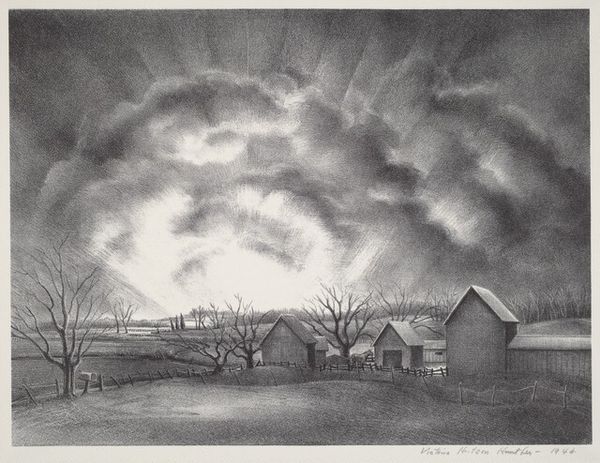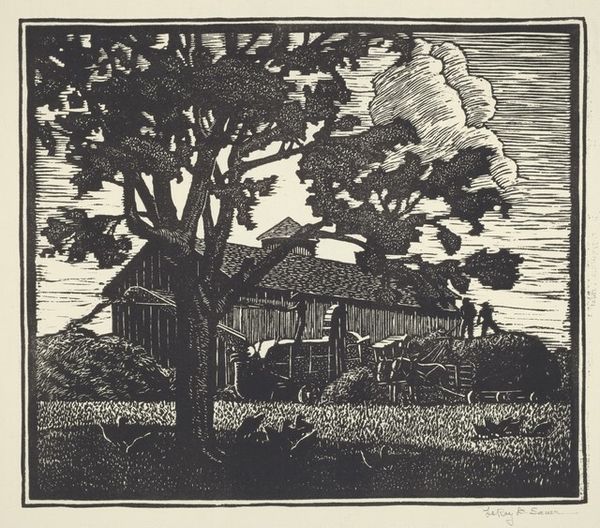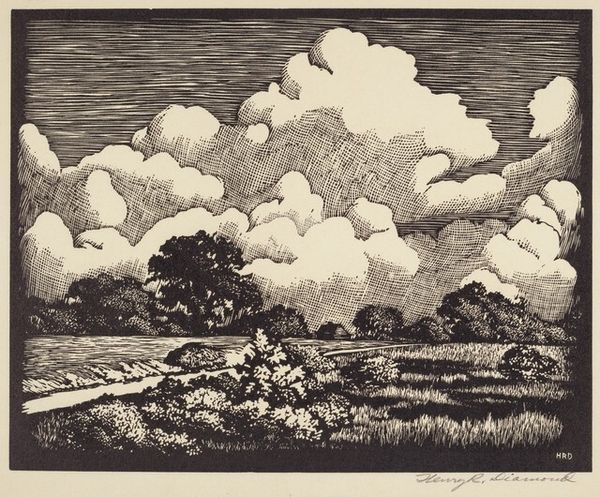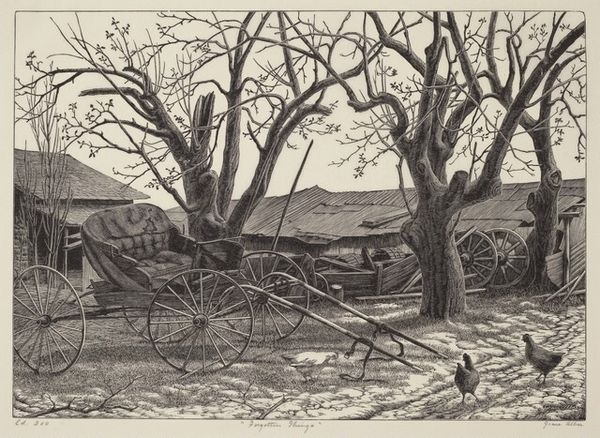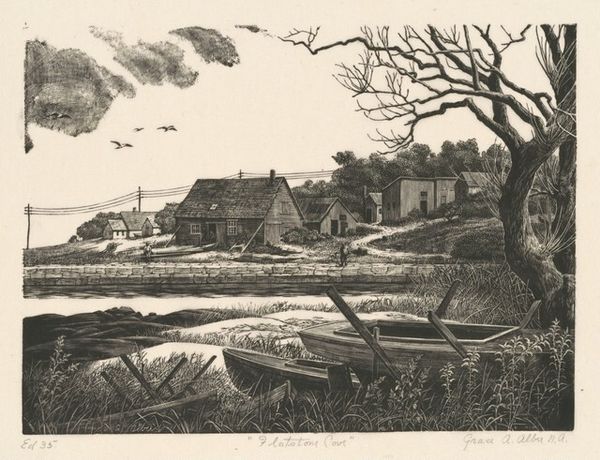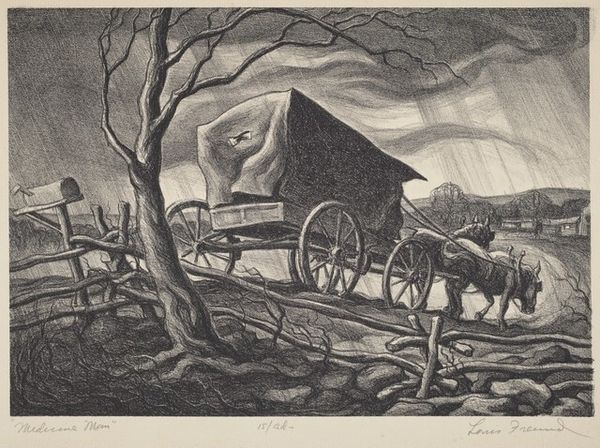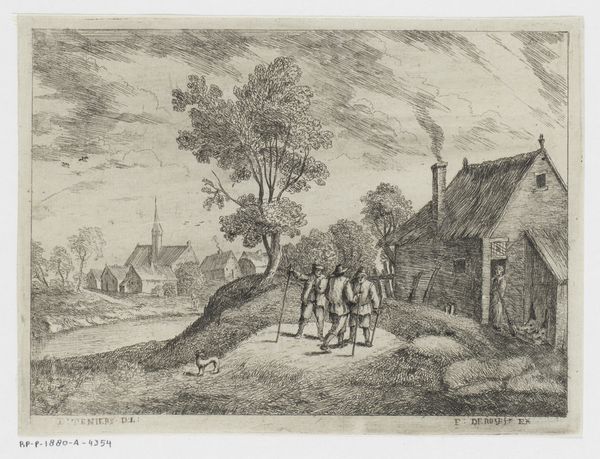
# print
#
landscape
#
realism
Dimensions: Image: 190 x 228 mm Sheet: 240 x 287 mm
Copyright: National Gallery of Art: CC0 1.0
Editor: This print, "Farm Scene," by Gustaf Oscar Dalstrom, created in 1932, has such an interesting texture. It's a pretty classic pastoral landscape. The cows and the slightly menacing sky make me wonder though... what are we meant to think about this idyllic image? Curator: That’s a great observation. This seemingly simple farm scene exists within a very specific moment in American history. The 1930s were, of course, dominated by the Great Depression. How do you think the social context could inform the interpretation of the landscape? Editor: Maybe the “realism” points to a certain… desperation? Like, these are real farms that need to survive? It seems that art had to show real people to resonate with the society back then. Curator: Exactly. Many artists at the time turned towards realistic depictions of American life, often focusing on rural scenes like this one. This wasn't just about artistic style, it was about making art that was relevant and accessible to the struggling population. This imagery promoted ideas of national resilience during the Great Depression. Consider how prints allowed artwork to become accessible, affordable, and thus widely distributed, thereby cementing an understanding of identity and community. Editor: That's so interesting. So even a seemingly simple farm scene could carry political weight and serve an important social function. I wouldn’t have expected it. Curator: Yes, understanding the historical and social context transforms how we perceive seemingly conventional landscapes. Editor: I’ll definitely think differently about prints from this period from now on. Thank you for putting things into perspective.
Comments
No comments
Be the first to comment and join the conversation on the ultimate creative platform.
